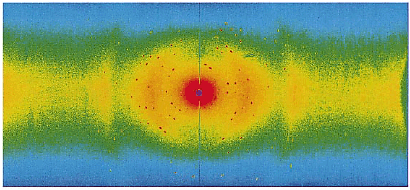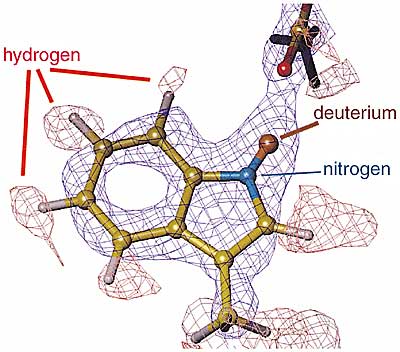Rubredoxin (Rd) is known as an electron transfer protein, but its physiological role has not been definitely established. The wild type of Rd from the hyperthermophile pyrococcus furiosus has extreme thermostability, so that it is not denatured in 92°C hot water for 2 days, and it is interesting to apply as a hyperthermophile protein, but the mechanism is not known. Recently, in order to understand the mechanism of the stability, a very high resolution X-ray crystallography study has been carried out by comparing the structure of the wild type with the mutant which is not so stable to heat, but the special difference of backbone structure between them could not be found. We assume there might be differences in hydrogen bonding and/or hydration structure and as a first step a neutron diffraction study of the wild type of Rd has been carried out with BIX-3, which is a diffractometer dedicated to protein crystallography.
Raw data is shown in Fig. 1-13. The many red spots in the figure are neutron diffraction spots from a Rd single crystal and as many as possible diffraction spots are collected by the crystal rotation method, and the data analysis provides the structure of Rd. Figure 1-14 shows the triptphan residue structure including hydrogen atoms. The resolution is 1.5 Å and this is the highest (a world record) so far. This shows the feasibility of analysing the origin of the thermostability of Rd. In future the measurement of the fundamental and important proteins with BIX-3 will provide the three-dimensional structure including hydrogen and hydration and the understanding of the origin of the physiological function. |

